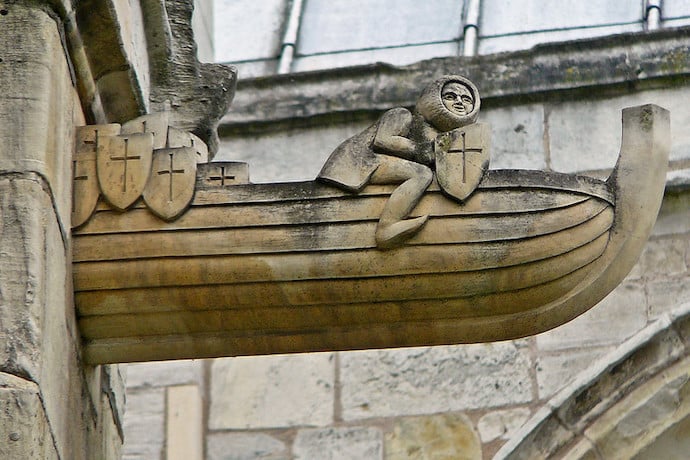If you had to tell which way was North without using any electronics or maps, how would you do it? This was a common problem for people in the past, back when the world hadn’t been fully explored or charted. Those resourceful early travelers had to invent some ingenious ways to get around.
The compass most likely originated in China somewhere around 2BCE-1AD (2000 years ago!) and was a huge help for navigation. But as handy as this instrument was and still is, not everyone in ancient times had access to a compass. For example, the Vikings never got the memo about this cool new invention, so they used the sun, rather than the Earth’s poles, to find North.
Because the sun rises from the East and sets in the West, it was really handy for getting around. The Vikings would take sundials with them during their boat trips to gauge which way they were going, until…you guessed it…the sun went down or was hidden behind clouds.
But even that didn’t stop them. Written within the annals of Viking history are records of a “sunstone”. The idea was, if you looked through this crystal during a cloudy day, the crystal would refract the light in a way that told you where the Sun was. And it was this tool that helped keep the Vikings on the straight and narrow when things got gloomy.
Sounds exciting, right? The thing is, Viking history is so steeped in mythology and legend that it was difficult to tell if this sunstone was the real deal or not. Historians believed it could very well be a tall tale…that is until someone made one.
In 1967, Danish archaeologist Thorkild Ramskou had a theory of what this mystical stone could be. He proposed that the Vikings used Calcite, also known as Icelandic Spar, to find their way. Icelandic Spar is special because it can diffract light even in gloomy conditions. In experiments performed in 2011, scientists drew a dot on the top of the crystal, then looked through the bottom of it. This would show two dots because the light going through the crystal is being diffracted and creating two ‘copies’ of the dot.
Now all they needed to do was rotate it until the two dots were the same brightness, and wherever the top face is pointing is where the sun would be. These modern sunstone experiments managed to identify where the sun was by a few degrees (even during a sunset).
While it’s difficult to say for sure that this is how the Vikings navigated, researchers did find Icelandic Spar positioned near other navigational tools on an Elizabethan Era ship that sank in 1592.
So the next time you want to know where North is, try doing so without any gadgets. There are plenty of ways to find out, and ancient history is full of inventions and tricks that people performed to do just that.

